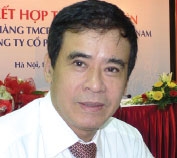Deo Ca tunnel enters the light
 Did the project preparations all wrap up?
Did the project preparations all wrap up?
It is important to note that Resolution 13-NQ/TW at 11th Central Party Committee’s fourth meeting on building a comprehensive infrastructure system to turn Vietnam into a modern-oriented nation by 2020 put emphasis on prioritising investment for upgrading and expanding national highway 1A. The task is expected to be entirely complete by 2020.
Thereby, expediting Deo Ca tunnel project to traverse Deo Ca in south-central Vietnam is of great importance. The project is crucial to socio-economic development in the central region, particularly Phu Yen and Khanh Hoa provinces and those positioned in southcentral coastal and Central Highlands regions.
As the project developer we will do our utmost to closely observe requirements of the government, Ministry of Transport, relevant ministries and state agencies in project preparations. Prestigious international and local consultants have contributed to outlining the project’s feasibility studies and diverse reports appraising socio-economic and environmental impacts on the lives of people in affected areas.
Since the project is handled under build-operate-transfer (BOT) and build-transfer (BT) models, its financial arrangements were prepared from early days and almost finalised at this time.
Are there financial arrangement hardships given the project’s enormous investment of VND15.603 trillion ($743 million)?
Sourcing investment capital presents us great challenge in the current context of persistent economic vulnerabilities at home and abroad. To fill up capital needs, we have turned to different sources.
The capital portion for BOT section is arranged by the bank group consisted of Credit Agricole-Corporate Investment Bank and Societe Generale and several other banks coming from Korea, Spain and Japan under proposal from contractors.
These banks have studied the project records. Accordingly, the project is in a position to source VND10.500 trillion ($500 million). Relevant credit contract will be inked in 2013’s first quarter after finalisation of project’s blue prints, paving the way for negotiating contract details.
What’s about capital arrangements for the BT section?
With support from the Ministry of Finance, we have had working sessions and inked an exclusive credit arrangement contract for BT section valued at VND4.509 trillion ($214 million) with Goldman Sachs.
The US-based bank has appraised the project records and gave us credit offer with explicit clauses in which it proposed choosing World Bank’s Multilateral Investment Guarantee Agency (MIGA) to render the [credit guarantee] service.
Goldman Sachs and MIGA have engaged in assessing project’s environmental impacts and are drafting the credit contract which is expected to be inked in December 2012.
Besides, VietinBank has pledged to lend us VND539.5 billion ($25.6 million) for land compensation and resettlement of affected people in 30 month time at state regulated interest rate.
Beside, the facilitate BOT section implementation, we hope to raise further VND150 billion ($7 million) from VietinBank for the bidding packages on building associated roads linking to the tunnel.
Would you share us more about the project’s further steps after the launching ceremony?
This is a landmark project to be underway under BOT and BT forms. Building Deo Cao tunnel under BOT form costs VND10.555 trillion ($502 million) whereas the sum for building Co Ma tunnel, associated bridges and an access road under BT form is around VND4.509 trillion ($214 million), compensation cost would be VND539 billion ($25.6 million).
This total estimated sum is set based on current context, so we need to strictly adhere to the progress targets since any delay could hurt us through price or exchange rate volatility.
Besides, as the project targets not only tackling transport woes, but also spurring regional and inter-regional economic development, we need to ensure the life of people in affected areas not being affected by project activities.
| Deo Ca tunnel spans over 13.4 kilometres, including 3.9km Deo Ca tunnel, 500m Co Ma tunnel and a 9km access road and associated bridges, with an estimated velocity of 80km/hour. It starts from Phu Yen province’s Dong Hoa district and ends at Khanh Hoa province’s Van Ninh district in south-central Vietnam. |
What the stars mean:
★ Poor ★ ★ Promising ★★★ Good ★★★★ Very good ★★★★★ Exceptional
Related Contents
Latest News
More News
- Global partnerships key to Vietnam’s IFC development (December 26, 2025 | 16:18)
- Vingroup pulls out of bid to invest in North-South high-speed railway (December 26, 2025 | 11:42)
- Strengthening supply chains through trade promotions and customs reform (December 24, 2025 | 14:00)
- PM orders investment model for North–South high-speed rail (December 22, 2025 | 17:43)
- LS Eco Energy to invest in Vietnam rare earth sector (December 22, 2025 | 17:31)
- Government moves to establish International Financial Centre (December 21, 2025 | 21:00)
- Vietnam's IFC to target global investment flows (December 21, 2025 | 18:00)
- Two national hospitals expand capacity with new facilities (December 20, 2025 | 09:00)
- Ha Tinh breaks ground on major Vingroup industrial and energy projects (December 19, 2025 | 18:24)
- EVN launches major power infrastructure projects nationwide (December 19, 2025 | 18:17)

 Tag:
Tag:





















 Mobile Version
Mobile Version